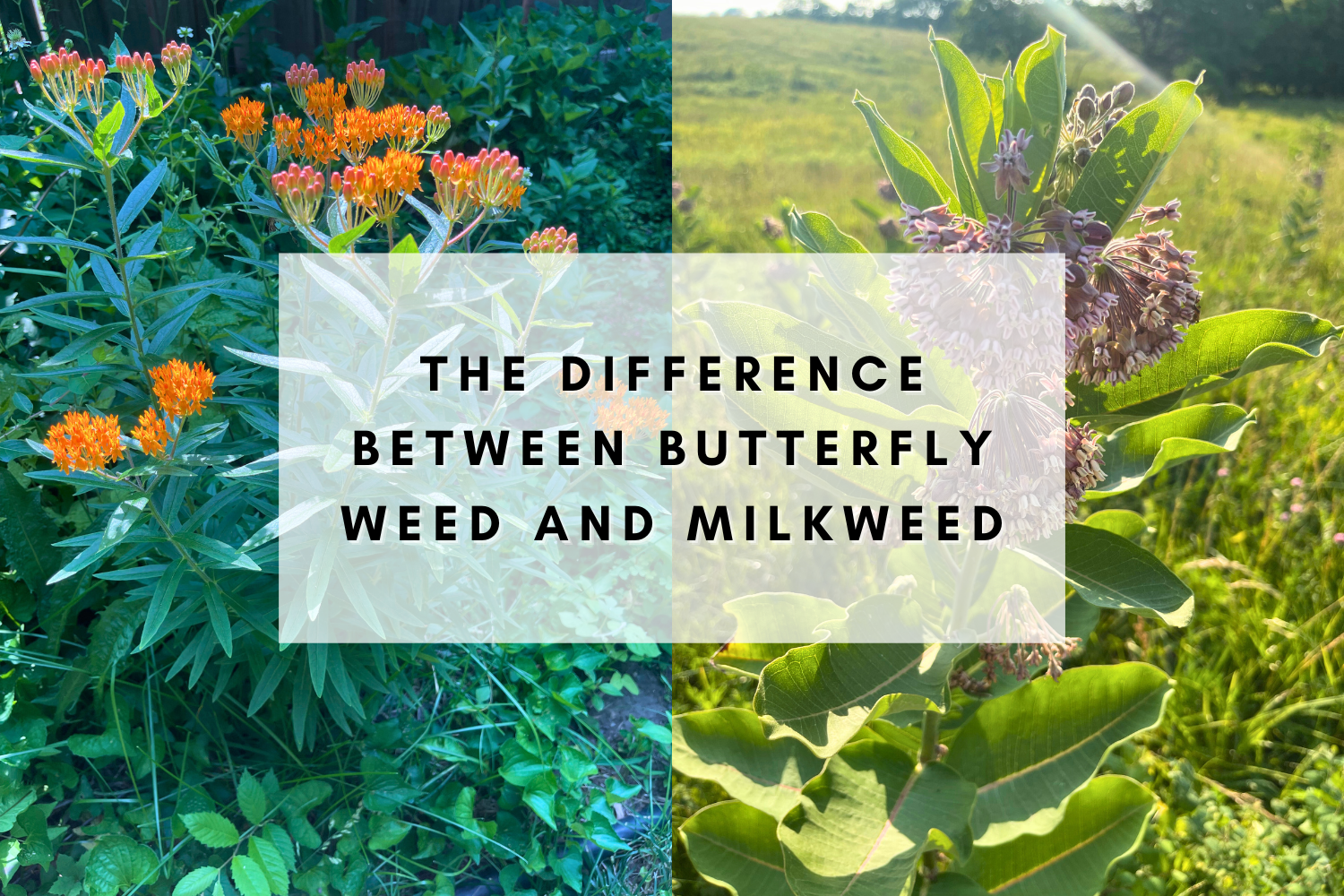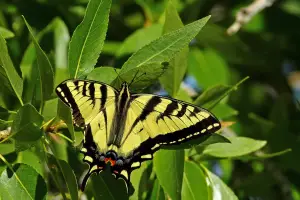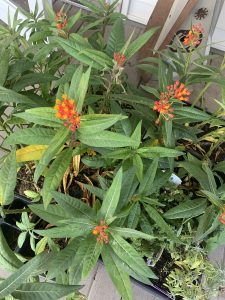In the world of gardening and wildlife conservation, the terms “butterfly weed” and “milkweed” are often used interchangeably, leading to confusion among gardeners. However, these two plants, while related, are different.
To better understand their unique characteristics and benefits, let’s delve into the differences between butterfly weed (Asclepias tuberosa) and milkweed (Asclepias spp.).
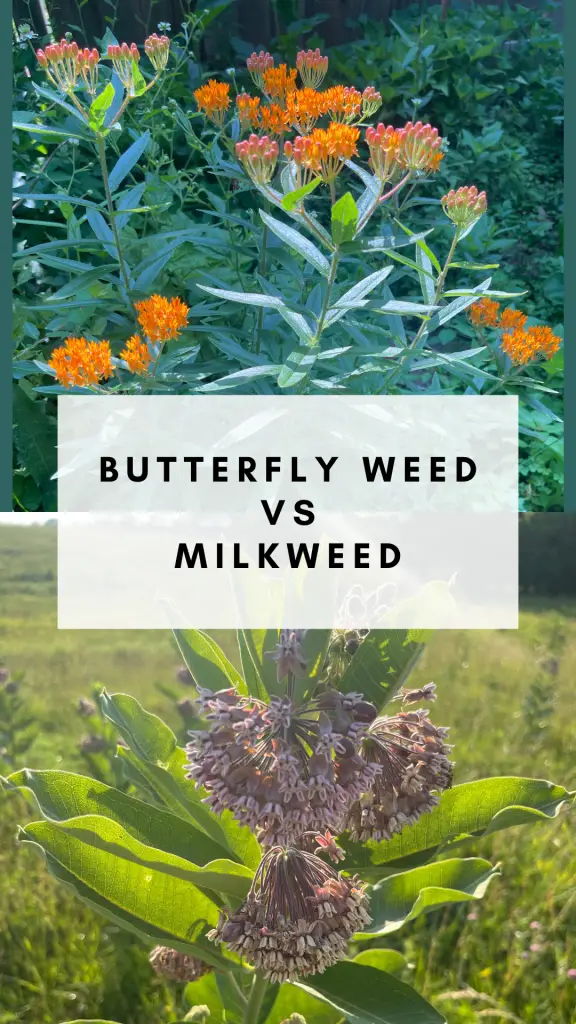
When people refer to milkweed, they are usually referring to common milkweed or other typical varieties used mainly as host plants for monarch butterflies in pollinator gardens.
Butterfly weed (or butterfly milkweed) is a specific type of milkweed, and is more commonly used as a flowering nectar source in butterfly gardens.
You’ll often find butterfly weed recommended for home gardens along with other common native pollinator plants such as black-eyed susan, purple coneflower and joe-pye weed.
Both milkweed and butterfly weed are host plants in the milkweed family that monarch butterflies may choose to lay their eggs on. However, butterfly weed doesn’t seem to be a preferred species of milkweed for monarchs.
Here are Some Other Differences Between Butterfly Weed Vs. Milkweed:

Butterfly Weed:
Butterfly weed, scientifically known as Asclepias tuberosa, is a species of milkweed native to North America. It is a native perennial plant that belongs to the Apocynaceae family. Unlike many other milkweed species, butterfly weed has a more compact and clump-forming growth habit.
Appearance: One of the most noticeable distinctions lies in the color of the flowers. Butterfly weed plants boast vibrant orange, sometimes red or yellow flowers that attract a variety of pollinators, especially butterflies. The plant typically grows to a height of 1 to 3 feet, with lance-shaped leaves and a striking, erect stem.
Growing Conditions: Butterfly weed thrives in well-drained, sandy soil and is well-adapted to full sun conditions. It is known for its tolerance to drought conditions, making it an excellent choice for dry gardens. This adaptability makes it a great choice for gardeners seeking low-maintenance, drought-resistant plants.
Wildlife Attraction: As the common name implies, butterfly weed is a magnet for butterflies, particularly monarchs. The plant serves as a host for caterpillars and provides a nectar-rich source for adult butterflies. Additionally, it attracts other pollinators like bees and hummingbirds, contributing to the overall biodiversity of the garden.
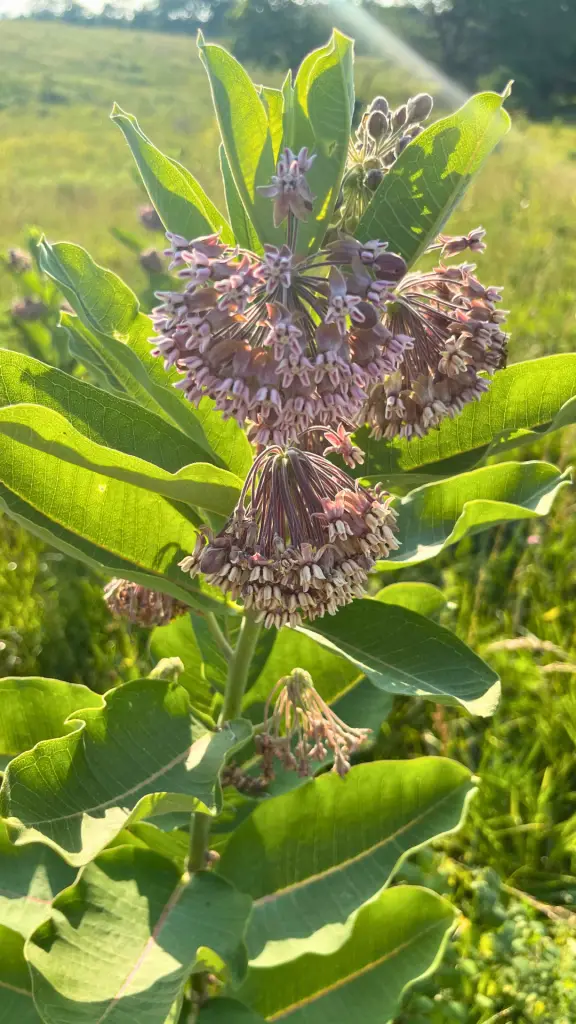
Milkweed:
Milkweed is a broad term that encompasses various species within the Asclepias genus. Common species of native milkweed include Asclepias syriaca (common milkweed), Asclepias incarnata (swamp milkweed), and Asclepias curassavica (tropical milkweed), among others. Each species has its own unique characteristics.
Appearance: While butterfly weed is known for its vibrant orange hues, other milkweed species may display flower clusters in a range of colors, including pink, white, or purple. The flowers are typically clustered in umbels, and their shape and size can vary among different species. This diversity makes milkweed a versatile choice for gardeners aiming to create visually appealing landscapes.
Milkweed derives its name from the milky sap in its stem that can be toxic humans and animals, most commonly causing skin or eye irritation to humans.
Growing conditions: Milkweed plants are found in a variety of habitats, ranging from meadows and fields to wetlands. Their adaptability allows them to thrive in different soil types and moisture conditions. Some species, like swamp milkweed, prefer moist soils, while others, such as common milkweed, tolerate dry soil.
One of the most common places to find common milkweed is on the side of country roads throughout the United States.
Monarch Butterfly and Beyond: Milkweed, in general, plays a crucial role in the life cycle of the monarch butterfly. Monarch caterpillars feed exclusively on milkweed leaves, making it an essential host plant.
Planting various milkweed species helps support monarch populations and promotes biodiversity by attracting other pollinators and beneficial insects.

Should you plant butterfly weed or milkweed in your garden?
While both butterfly weed and milkweed share the common thread of being beneficial to butterflies and other pollinators, their distinct characteristics make them suitable for different garden settings.
They are both types of milkweed, but butterfly weed stands out with its bright orange flowers, compact growth habit, and preference for well-drained, sunny locations.
On the other hand, the term “milkweed” encompasses all different species of milkweeds, each with its unique features, colors, and environmental preferences.
Whether you’re aiming to create a specific color scheme in your perennial garden or cater to the needs of various pollinators, understanding these differences will help you make informed choices as you cultivate your outdoor spaces.
So, embrace the diversity of these native plants, and let your butterfly garden flourish with life and color – and plant both common milkweed and butterfly weed to reap the benefits of both!

